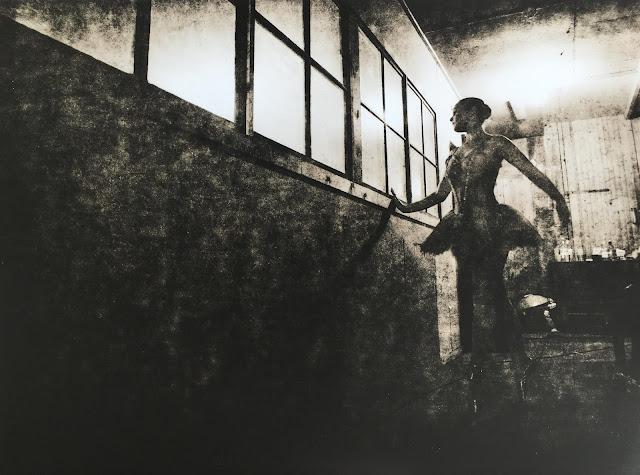If you think there's a great difference in between film types and qualities, well then go ahead and try a few different papers and check out the differences on the final prints which is enormous compared to different film types.
You have of course seen this shot a few times before if you've been through this blog a few times, but I've never lith printed it before. I think this phone photo of the print should give you a pretty good idea of the look of the print. It's rough as heck, but I like it a lot for this sort of look.
I have wanted to get my hands on some Slavich paper for quite a while now, but for some reason it has just never happened that I have put the order in. My usual suppliers of paper do not stock it, so the solution for me was to get it from Slavich's distribution company Geola, over in Lithuania. No problems whatsoever to get what I wanted from them, but the shipping and tax cost was a bit high from what I remember.
Their Baryta based "Unibrom" paper comes in two grades, Normal and Contrast. I only had time to do a few tests on the Normal paper, but will post examples from their Contrast grade as well some time.
My Ballerina shot done a couple of years or so back in time. This got a very different feeling to it all of a sudden when using the Slavich paper compared to the smoother Emaks paper from Fotokemika which I've used for lith earlier.
I only tested the Slavich paper in lith developer (LD20) due to time issues (as usual). What I really liked about it is the rather extreme graphic looks it gives in the shadows, and the beautiful and warm tones (yellowish) I got in the highlights.
And before you start to ask me what kind of test this is... well, it's not a test as in such. I only made three prints to see what it looked like, so if you need a deep test in all sorts of conditions and all sorts of developers compared to whatever else, I'm afraid you'll have to look elsewhere. I will probably come back though, with more prints and hopefully less words.


